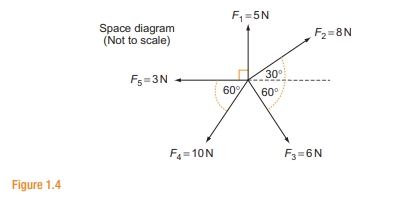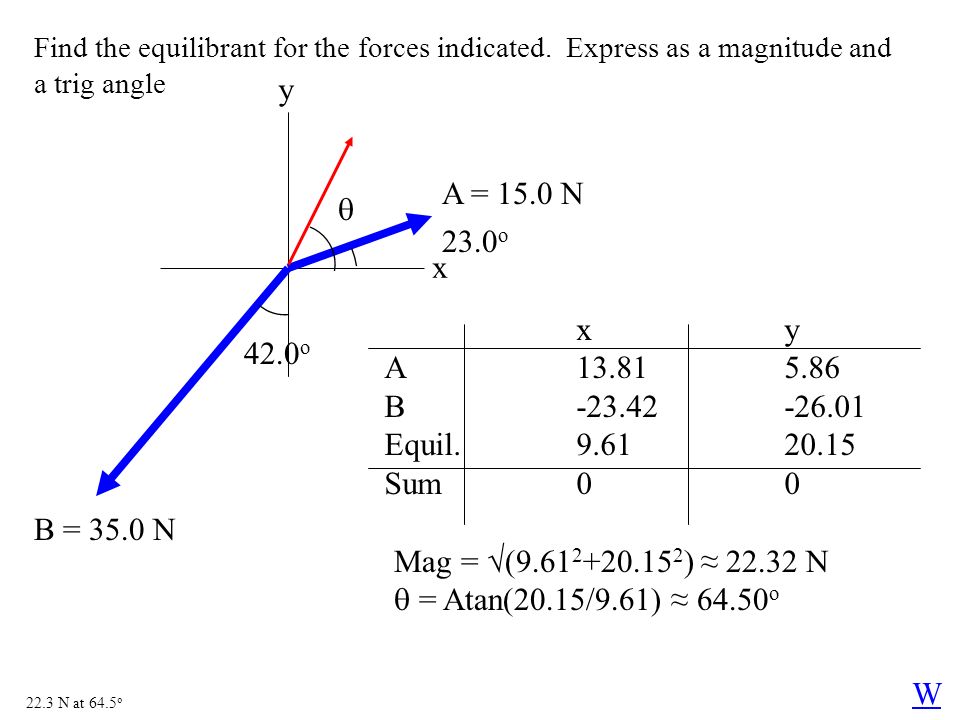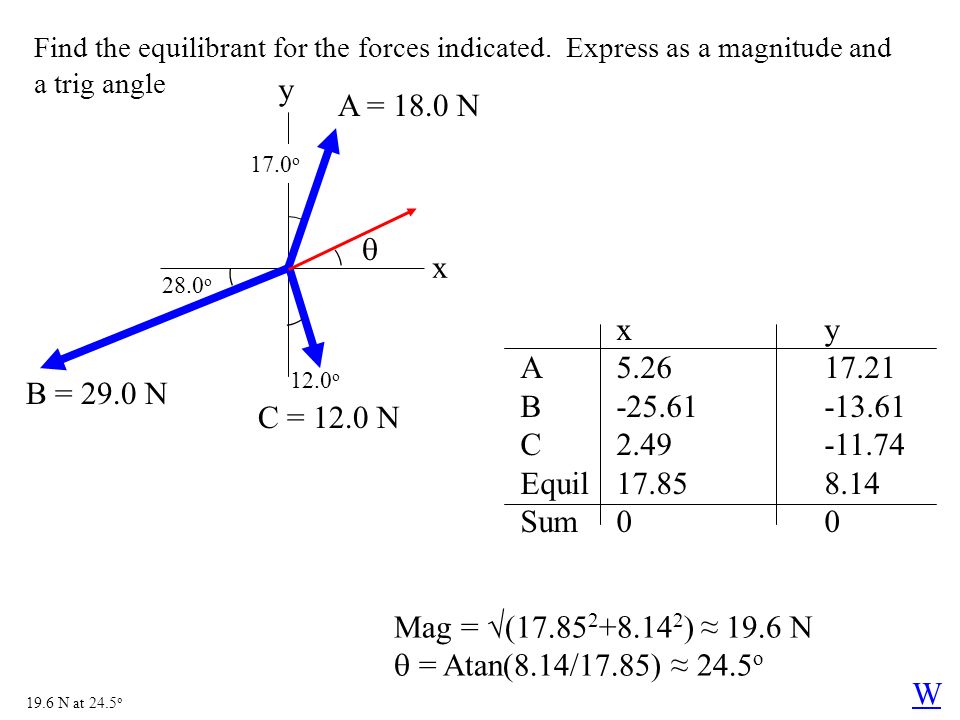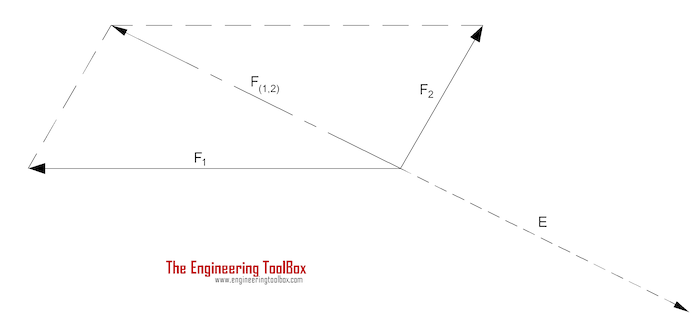Define Resultant And Equilibrant
The difference between a resultant and equilibrant vector is that resultant vector is a direct quantity one with both magnitude and direction while the equilibrant vector is a force equal to but opposite of the resultant sum of vector forces that force. Equilibrant The equilibrant is the vector which has the same magnitude but opposite direction to the resultant vector.

Equilibrant Of Three Forces In Three Dimension Vectors Resultant And Equilibrium Youtube
A resultant of number of forces acting on a body is a single.

Define resultant and equilibrant. Equilibrant is defined as a single force which keeps the body in equilibrium when number of forces acting on it. The magnitude and direction can be found from the vector sum. Problem 5 Easy Difficulty.
Explain thedifference between the two termsFind the magnitude and direction of a theresultant b the equilibriant of two forces 10N acting in the direction N 30 East and 15 Nacting in the easterly direction if both forcesact at a point. Force which can produce the same effect on the body as it is produced by all the forces acting together. For just practice and getting good at it try to set each vector at certain x and y components.
Equilibrant plural equilibrants A force equal to but opposite of the resultant sum of vector forces. Forces that make up the resultant are called the components of the resultant. Calculating Resultant and Equilibrant Forces Part 1 - YouTube.
It is usually computed by the component method given two or more known forces. It is equal in magnitude but opposite in direction. Minds On Equilibrant of Several Forces The equilibrant is the opposite vector to the resultant.
One Newton is defined to be 10 kgms2. 1 on a question. Define the terms resultant and equilibriant of two forces acting at a point.
2 Marks Q-4 State the lamis theorem. Explain the difference between the two terms. A tutorial from our Engin.
2 Marks Q-2 Write the analytical conditions of equilibrium for coplanar concurrent force system. Explain thedifference between the two termsFind the magnitude and direction of a theresultant b the equilibriant of two forces 10N acting in the direction N 30 East and 15 Nacting in the easterly direction if both forcesact at a point. An equilibrant of number of forces acting on a body is a single force which cancels the effect of resultant of a system of forces or which brings the system.
Equilibrant forces act on virtually every object in the world that is not moving. Equilibrant forces are those that act on a body at rest and counteract the force pushing or pulling the body in the opposite direction. If you add the resultant vector and the equilibrant vectors together the answer is always zero because the equilibrant cancels the resultant out.
Overrightarrowf_1 has a magnitude of 5 mathrmN acting due east and overrightarrowf_2 has a magnitude of 12 mathrmN acting due north. Resultant is defined as a single force which produces the same effect on the body that has produced by number of forces acting on it. Differentiate the Resultant and Equilibrant of two forces.
Calculating Resultant and Equilibrant Forces Part 1 Watch later. Equilibrant forces establish equilibrium for an object and make the object motionless. HttpsengineersacademyLearn how to determine the resultant and equilibrant of two forces acting on an object using trigonometry.
2 Marks Q-3 Define the free body and free body diagram. Find the magnitude and direction of a the resultant b the equilibriant of two forces 10 N acting in the direction N 30 East and 15 N acting in the easterly direction if both forces act at a point. The force of gravity is pulling down a.
If a resultant force acts on an object then that object can be. When two or more forces act on a rigid body the net result is equivalent to a single force acting resultant. The black vector shows the resultant.
A resultant force would cause a stationary object to start moving or an object with a given velocity to speed up or slow down or change directions such that velocity of the object changes. Equilibrant is a force that is exactly opposite to a resultant. As you move any of the vectors around you will see that the values corresponding to its components change on the applet.
Embed Size px Recommended. Determine the resultant and equilibrant of each pair of forces acting on an object. The force required to BALANCE a set of forces is called the equilibrant force.
That force which balances other forces thus bringing an object to equilibrium. Define the terms resultant and equilibriant of two forces acting at a point. The maximum value of resultant of two forces P and Q.
Q-1 Define the relation between resultant and equilibrant. When the equilibrant is applied to the object this force maintains the object in a state of equilibrium. Equilibrant and resultant have equal magnitudes but opposite directions.
Define the terms resultant and equilibriant of two forces acting at a point. Define the tenn resultant and equilibrant.

Mechanics Of Solids Types Of Forces Force Physics Physics Force

Solved Find The Magnitude And Direction Of The Resultant And Equilibrant 1 Answer Transtutors

Statics Equilibrant The Condition Of Equilibrium How To Solve Example Whiteboards Demo Force Scales Masses Ppt Download

How Find Equilibrant Mathematics Stack Exchange
In The Figure Force Vectors And Are Added The Chegg Com
Https Www Tecumseh K12 Oh Us Downloads Physics 6 13 Pdf

Statics Equilibrant The Condition Of Equilibrium How To Solve Example Whiteboards Demo Force Scales Masses Ppt Download
Http Www Tecumseh K12 Oh Us Downloads Physics 6 3 Pdf

Forces Equilibrium Equilibrant Forces Equilibrant A Single Additional Force That Is Exerted On An Object To Produce Equilibrium Which Is The Same Ppt Download

What Are Resultant And Equilibrant Forces Quora

Statics Equilibrant The Condition Of Equilibrium How To Solve Example Whiteboards Demo Force Scales Masses Ppt Download

Statics Equilibrant The Condition Of Equilibrium How To Solve Example Whiteboards Demo Force Scales Masses Ppt Download





Posting Komentar untuk "Define Resultant And Equilibrant"